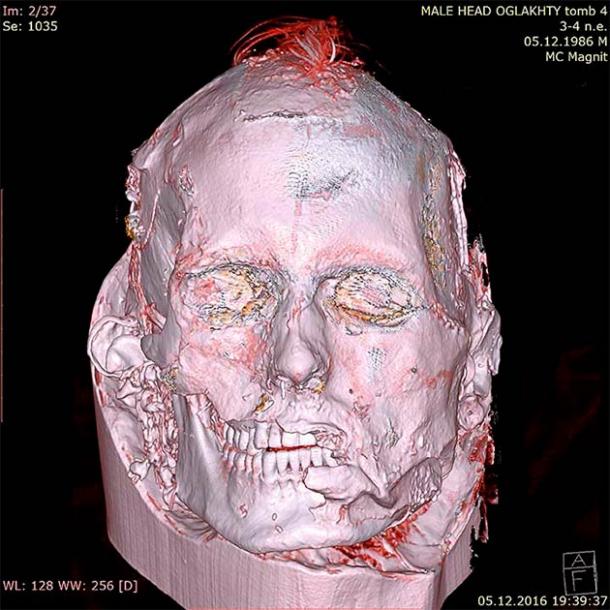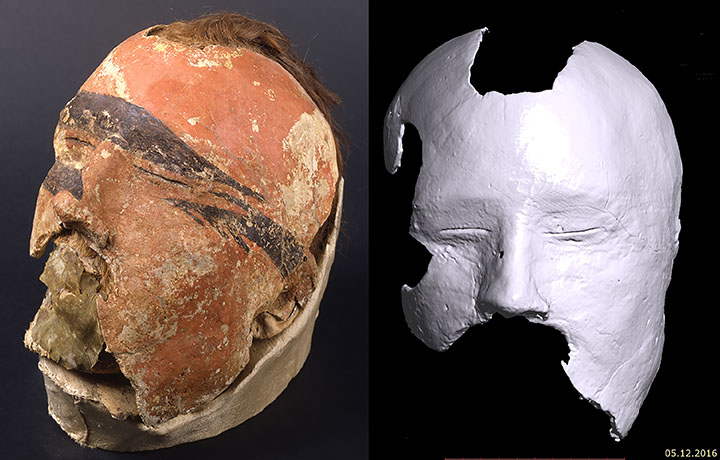In the frozen expanse of Siberia, a remarkable discovery has shed light on the ancient Tashtyk culture. A 1,700-year-old mummy, belonging to a man aged 25 to 30, was found wearing a striking gypsum mask. This find has fascinated archaeologists and historians alike, providing a unique glimpse into the customs and rituals of this enigmatic civilization.
Unearthing the Tashtyk Man
First unearthed in 1969, the mummy of the Tashtyk man remained an enigma for decades. Experts at the time refrained from removing the mask, fearing it might disturb the delicate features of the mummy beneath. It wasn’t until July 2020 that modern CT scanning technology allowed researchers to finally unveil his true appearance.

The Gypsum Mask: A Close Replica
Speaking to The Siberian Times in 2020, Dr. Svetlana Pankova, a curator at St Petersburg’s State Hermitage Museum, revealed that the gypsum mask closely resembled the man’s actual face. However, there were notable differences, particularly in his expression. Beneath the gypsum, which is a soft mineral, the man’s face appeared serene. The mask, however, painted a different picture, giving him what The Times described as a “red punk look” with aggressive black stripes daubed across its surface.
Tattoos and Hairstyles: Markers of Identity

The Tashtyk man was the first individual from his culture found to bear tattoos, adding another layer of intrigue to his story. His hair, styled in a pigtail fashion, had been cut off before his burial. The Metro reported that this haircut was part of the extensive rituals surrounding death in the Tashtyk culture. The wound from the haircut had been stitched, suggesting that the community took great care in presenting the deceased in their best possible state, whether masked or unmasked.
The Mystery of the Suturing
The reason behind the suturing of the haircut wound remains uncertain. While it is believed that the Tashtyk wanted their deceased to look their best, further research is needed to fully understand the cultural significance of this practice. The meticulous attention to the mummy’s appearance indicates a deep reverence for the dead and highlights the sophisticated burial rituals of the Tashtyk people.
Preserving the Past, Uncovering the Future

The discovery of the Tashtyk man and his striking gypsum mask offers a fascinating glimpse into the life and death rituals of an ancient Siberian culture. Through modern technology and ongoing research, we continue to uncover the secrets of the past, bringing us closer to understanding the lives of those who came before us.
Conclusion
The Tashtyk man’s story is a testament to the enduring legacy of human history and the intricate customs that define our civilizations. As we delve deeper into the mysteries of the past, we are reminded of the rich tapestry of human experience that has woven itself through the ages. The Tashtyk man’s legacy lives on, inspiring us to explore and appreciate the diverse cultures that have shaped our world.

